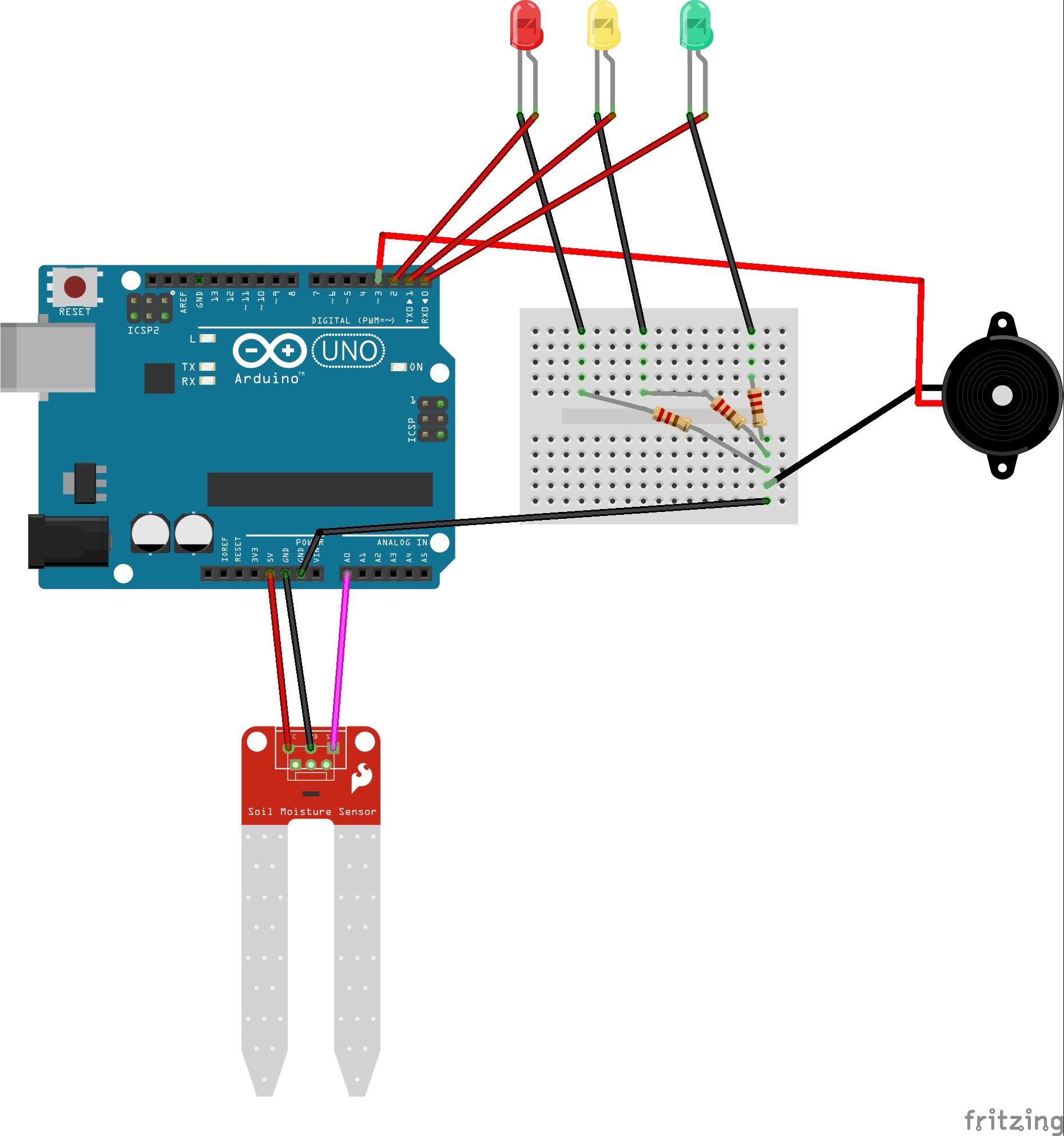This project is for a school code quest. I have seen many projects with soil moisture sensors, but all of them included expensive and complicated materials such as LCD screens or automatic watering systems. I took it as a challenge to create an incredibly cheap and simple Soil Moisture Sensor. The project is designed for people that might not know when to water their plants or water them too much or too little. The Soil Moisture Sensor distinguishes how wet the soil is, and identifies when the soil should be watered for you.
This design only includes a soil moisture sensor, a couple of LEDs and a buzzer. The LEDs constantly show the moisture level (Red - 0-30%, Yellow - 30-60% and green 60%+ switch on at those levels of moisture), and when the moisture level falls below 10%, the buzzer starts beeping. I designed this for a Port Jackson Ficus Bonsai, and have tested this extensively. The percentages I'm using works perfectly for me but might change depending on your plant. If you feel like the red light switches on way too late, when the soil is already too dry, you can change the Red percentage to 0-50% and Yellow to 50-80%, because that seems to also be working well.
How it works:
It works, when electrical currents are sent through the legs of the moisture sensor. The sensor then calculates the resistance it's getting. Since water conducts electricity - the wetter the soil is, the less resistance there should be. It's then connected to an Analog Pin and the Arduino can use that for the program.
The Soil Moisture Sensor needs to know the maximum moisture that the soil can reach, so we can calculate the percentages. This is called calibration. The sensor calibrates right when the circuit is switched on, in the Setup() function. Therefore, it should already be in freshly watered soil, when it is switched on.
Here are some photos of the circuit without the casing:
The soil moisture sensor I used has a screwable pin terminal, so no soldering is required. The most popular one sensor is the SparkFun moisture sensor and requires soldering. So I got one, that doesn't need soldering and can just have Male to Male wires screwed in, here.
My Pseudocode.
My Flowchart.
Casing:
The casing is a simple box, with the LEDs coming out of the top, and the buzzer on the side. The Soil Moisture Sensor comes out of the side with wires and is stuck into the soil, so it's relatively far from all the water-sensitive components.























_3u05Tpwasz.png?auto=compress%2Cformat&w=40&h=40&fit=fillmax&bg=fff&dpr=2)
Comments
Please log in or sign up to comment.